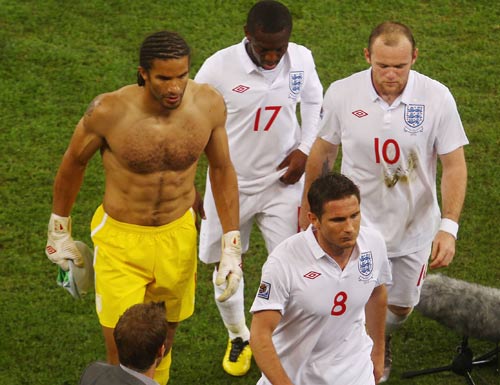
- News:
-
Webber hopes for Melbourne rain
- News:
-
No rule changes in 2010 Ecclestone admits
- News:
-
Mosley to blame for F1 situation insists Coulthard
- News:
-
'There is no panic, no crisis' - Ecclestone
- News:
-
'We are beholden to put on a good show' - Fry
- News:
-
Press slam 'Bore-rain GP'
- Race:
- Bahrain Grand Prix
- Championship:
- FIA Formula One World Championship
The Bahrain Grand Prix proved that there is no quick fix for overtaking in Formula One and, rather worryingly, there is the potential for things to get worse. It's worth remembering that this is the first race of the season and when we arrive at other circuits more conducive to overtaking the racing might be more exciting. Nevertheless, there is definitely a very big issue for the FIA to address.
In the refuelling era, the concern was that drivers would rely too much on strategy to get past their opponents rather than making a move on track. A driver going into a race with plenty of fuel on board would wait for his rival to pit and then put in a few fast laps on petrol vapours while his competitor was fat with newly-added fuel. If all went to plan he would come out in front without ever having to risk an overtaking move. Max Mosley famously said it was like a game of chess, to which the obvious response was, "and equally as boring".
So how were the new rules meant to get around this? It seemed relatively simple. By stopping refuelling the drivers wouldn't be able to rely on strategy to pass and would have to do it on track instead. You'd banish the sprints between refuelling in which drivers would only be concerned in setting the necessary lap times to make their strategy work and instead bring in much more driver involvement.
But for overtaking you need a major performance differentiator - as much as three or four seconds a lap between cars. Under the new regulations, the tyres were meant to become the crucial factor. By forcing the top ten on the grid to start on the same tyres they qualified on, it was hoped some drivers would tear their soft Bridgestones apart, while others would take it easy and ultimately reap the rewards.
In Bahrain that didn't happen. The softs held up remarkably well and McLaren said it could easily have made it to lap 25 (halfway through the race) if it had wanted. As a result the main performance differentiator didn't show up.

So what are the solutions? Well ultimately the problem is with aerodynamics and the cars' inability to get close enough to one another to pass. A following car will lose huge amounts of its performance sat in the turbulent wake of a competitor and, therefore, even if it is quicker, it can't get near enough the opponent's gearbox to make things interesting. Unfortunately we can't uninvent aerodynamics and 2009's attempts to reduce their influence clearly fell short. In 2011 we'll lose double diffusers that will definitely help but it won't make a night and day difference.
Instead the immediate focus should be on tyres. Clearly for this year's regulations to work the Bridgestones need to degrade more quickly and ideally they also need to offer more grip. Grippier tyres will mean the cars are less dependent on aerodynamic downforce when following another car. Essentially the tyres need to be edgier - closer to the limit. But asking Bridgestone to do that is likely to fall on deaf ears, as a driver complaining about their tyres falling apart does not make good publicity.
What we need - and I'm not the first to voice this opinion - is a tyre war. Two or more rival manufacturers competing to make the fastest possible tyre, and in doing so creating rubber that degrades much more quickly.
In 2011 Bridgestone will leave the sport - which is still one of F1's biggest concerns - but it should be seen as an opportunity to get three or four tyre suppliers in to the sport on a level footing. It won't solve the problems with overtaking, but at least it will justify the decision to ban refuelling that ultimately should lead to a much purer form of racing.
Laurence Edmondson is an assistant editor on ESPNF1
© ESPN Sports Media Ltd.
 Laurence Edmondson is deputy editor of ESPNF1 Laurence Edmondson grew up on a Sunday afternoon diet of Ayrton Senna and Nigel Mansell and first stepped in the paddock as a Bridgestone competition finalist in 2005. He worked for ITV-F1 after graduating from university and has been ESPNF1's deputy editor since 2010
Laurence Edmondson is deputy editor of ESPNF1 Laurence Edmondson grew up on a Sunday afternoon diet of Ayrton Senna and Nigel Mansell and first stepped in the paddock as a Bridgestone competition finalist in 2005. He worked for ITV-F1 after graduating from university and has been ESPNF1's deputy editor since 2010

